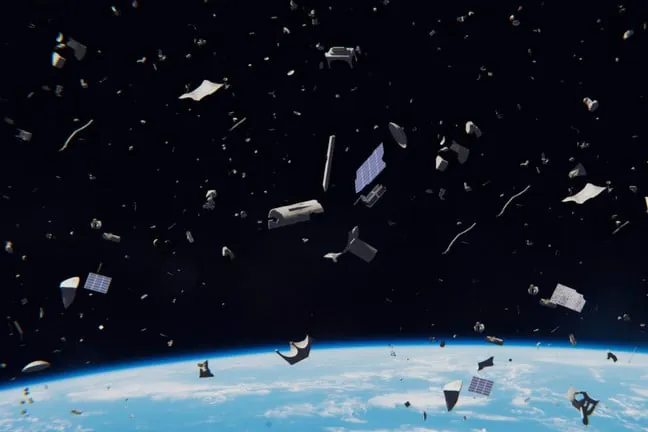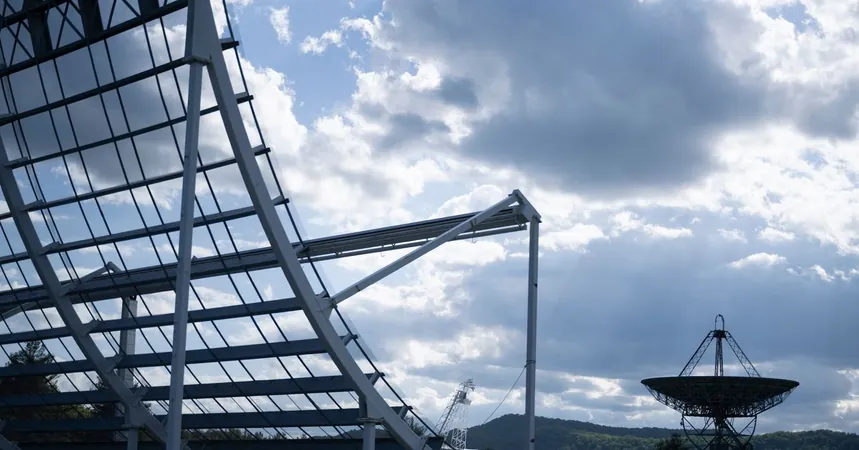
The Future of Orbital Data Centers: Opportunities and Challenges
2025-07-25
Author: Ming
Are Orbital Data Centers the Next Big Thing?
William Gibson's 1984 sci-fi classic, "Neuromancer," envisioned a world dominated by artificial intelligence residing in orbital data centers (ODCs) above Earth. Fast forward to today, and startups are racing to transform this fantasy into reality, betting on the potential of solar energy and the unique cooling advantages of space.
Big Investors Eye the Sky
Recently highlighted on CNBC's "Property Play," notable investors like the global chief investment officer of Hines are discussing ways to monetize space, including building data centers on the Moon. Venture firms are keen to pour money into companies like Orbits Edge and the newly-minted Starcloud, both gearing up to launch initial satellites later this year. Starcloud's ambitious proposal claims orbital centers could solve the looming energy crisis that threatens the burgeoning AI industry.
Skepticism Abounds
Despite the excitement, skepticism remains. Starcloud's promotional materials feature grand visions of massive solar arrays and powerful computing clusters capable of nurturing future AI giants. The path to making ODCs a reality hinges on the development of reusable rocket technology like SpaceX’s Starship, yet the harshness of space poses undeniable barriers.
The Brutal Reality of Launching to Orbit
Reaching Low Earth Orbit (LEO) is no small feat. Any hardware must accelerate from zero to 7.8 kilometers per second, enduring immense stresses that could obliterate typical servers. Once operational, these data centers face another hurdle: they must function flawlessly without on-site support, with a technician's visit to LEO costing millions.
Space Weather: A Dangerous Gamble
Radiation from solar activity presents further complications. Cosmic rays can wreak havoc on satellite electronics, leading to potential operational failures. Previous solar events have already resulted in significant disruptions, and a repeat of the infamous 1859 Carrington Event could have devastating consequences for unprotected orbiting satellites.
The Space Debris Dilemma
Yet another challenge lies in the ever-growing cloud of space debris. Each added satellite heightens the collision risk, potentially triggering a catastrophic cascade effect known as Kessler Syndrome. Without effective debris removal strategies, launching large solar arrays or data centers into orbit may carry excessive risk.
Niches for Success Despite Challenges
Despite these challenges, smaller ODCs could find a place in specialized roles. Applications such as defense-related data processing, real-time industrial operations on the Moon, and enhanced satellite data analytics highlight potential use cases. However, the grand vision of expansive data centers might still be a distant dream.
Looking Ahead: The Collision of Hope and Reality
Let’s hope that if larger ODCs do emerge, they will foster collaboration rather than chaos. The realm between science fiction and reality remains fraught with complexities, but the potential rewards are worth exploring.


 Brasil (PT)
Brasil (PT)
 Canada (EN)
Canada (EN)
 Chile (ES)
Chile (ES)
 Česko (CS)
Česko (CS)
 대한민국 (KO)
대한민국 (KO)
 España (ES)
España (ES)
 France (FR)
France (FR)
 Hong Kong (EN)
Hong Kong (EN)
 Italia (IT)
Italia (IT)
 日本 (JA)
日本 (JA)
 Magyarország (HU)
Magyarország (HU)
 Norge (NO)
Norge (NO)
 Polska (PL)
Polska (PL)
 Schweiz (DE)
Schweiz (DE)
 Singapore (EN)
Singapore (EN)
 Sverige (SV)
Sverige (SV)
 Suomi (FI)
Suomi (FI)
 Türkiye (TR)
Türkiye (TR)
 الإمارات العربية المتحدة (AR)
الإمارات العربية المتحدة (AR)